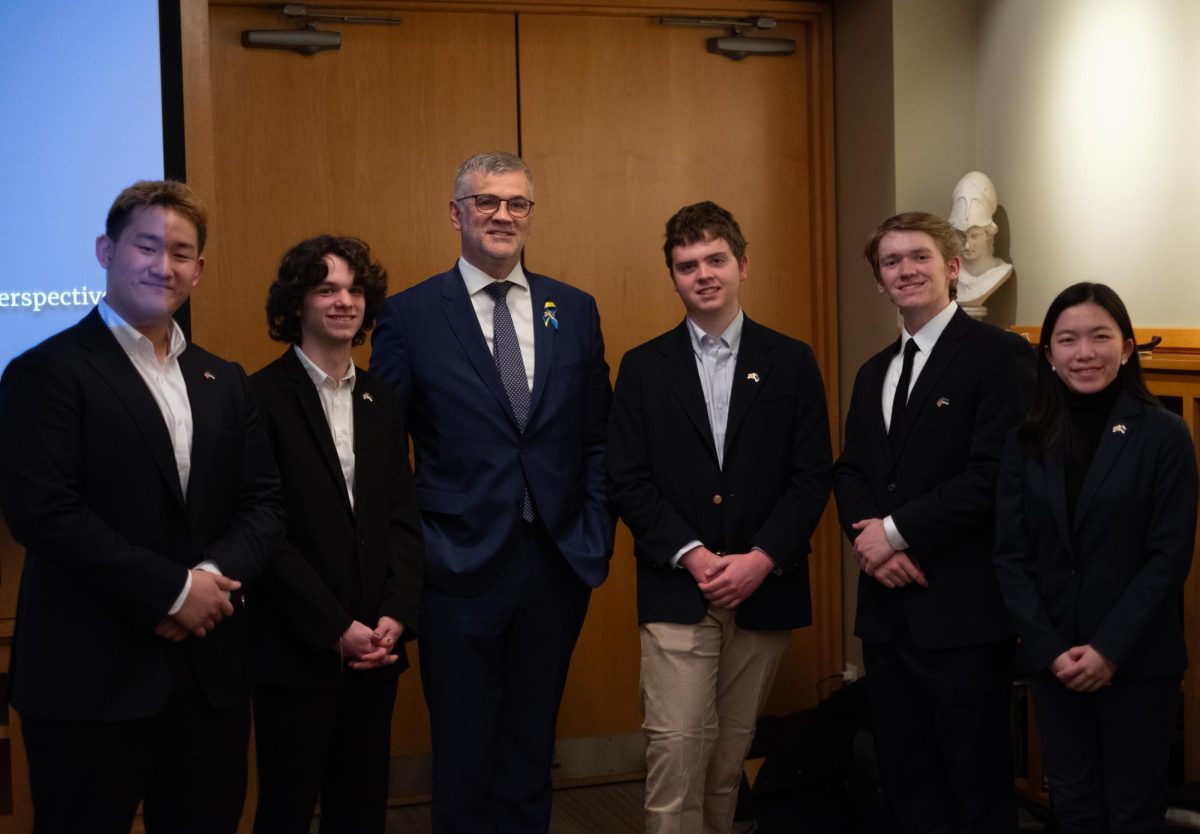Before this month, the typical number of “likes” the Office of Health Promotion (OHP) received on a Facebook post was about four. One particularly popular post received five likes and nine shares. But one recent OHP post has racked up a whopping seventeen hundred likes, eighteen thousand shares, and 2.7 million views.
The post, titled “Why ‘Zooming’ is so exhausting,” is comprised of a series of illustrations and summary of an April 22 BBC article titled “The reason Zoom calls drain your energy.” “Aspects of our lives that used to be separate are now all happening in the same place,” reads one of the slides in the series. “This makes us more vulnerable to negative feelings.”
“The video calls remind us of all that we have temporarily lost,” reads another image. “We should all be in a classroom together, but we’re not.”
Student Wellness Advocate (SWA) Julia Baumgarte ’21 created the post. The illustrations come from graphic-design platform Canva.
This type of post is typical from the OHP, noted Baumgarte. The office focuses on producing digestible content—representing scholarly literature through posters, typically intended for “SWA Stalls” in Carleton’s campus bathrooms, but now taking the form of digital posts.
“We aim to create helpful, informational, recent, and accurate content that is digestible in a minute or two,” said Baumgarte. “Whatever information we include we phrase in ‘plain English’—that is, no jargon or fancy words, short sentences, lists, and active verbs. We want our content to be as accessible as possible. After that, we design it so that it draws attention and looks nice.”
As to why this particular post went viral, OHP staff cannot be sure. “I think a lot of people are feeling this exhaustion right now, whether they know it or not,” said Baumgarte. “So of course it’s good to see content like this and feel validated.”
“I think the post was addressing something that was new for a lot of people, and it was able to articulate what people couldn’t quite explain,” added SWA Tracy LeBlanc ’21. “I think some parts really resonated with people.”
LeBlanc is the primary SWA in charge of managing the OHP’s Facebook and Instagram pages. “We posted it on a Friday and it quickly became our most liked post on Instagram,” she said. The slides are posted on Instagram in addition to Facebook, and have received 912 likes, 989 shares, and six thousand views on that platform.
That weekend, the post’s Facebook reach climbed into the thousands. When the post hit a reach of one million users—the following weekend, May 19-20—OHP staff realized they’d gone viral, said LeBlanc.
“I get Instagram notifications from the SWA account, so I noticed when a lot of people were reposting that on their stories,” said Baumgarte. “Then I checked Facebook and saw a couple hundred shares, and it kept climbing from there. Pretty gradually at first, then almost a thousand shares per day. When my supervisor said she had seen a couple people completely unrelated to Carleton share it on Facebook, we knew we had gone viral.”
The Facebook post’s nearly three million views come not only from the U.S. but also the U.K., Canada, the Philippines, Mexico, Australia, South Africa, New Zealand, Singapore, and India.
With over seven hundred comments, the post inevitably received a few critical ones. “So f*ck the deaf community who relies on lip reading, eh?” reads one comment under a slide that recommends people limit video calls where they can and that camera use is optional.
“Stop being so damn sensitive. It’s technology,” reads another comment.
“I think that, in some cases, people don’t understand that we’re not criticizing technology, we’re observing how it makes us feel and why that is,” said Baumgarte. “We also recognize that some of the negative comments are genuine constructive feedback. Of course people are going to voice their opinions, and some of them may be negative, but the vast majority of comments are praise and positive feedback. We’re grateful to have had so many people respond so positively.”
The OHP has chosen not to respond to any social media comments, positive or negative.
The success of the May 8 post has also led to some increased engagement with OHP social media more broadly. The OHP’s Instagram page has received over 100 likes since the post went up, and a “couple hundred” new Facebook page likes, according to Baumgarte. These followers come both from within the Carleton community and beyond it, noted LeBlanc.
“Our SWA stalls have never really been created with the idea that such a large audience would see them,” said LeBlanc, “beyond Carleton people using the bathroom.”
“It’s really exciting that a lot of people have found things that they like about the Zoom post, but it’s also interesting to have a lot of feedback on it, good or bad,” she continued. “Some comments have brought up good points that we need to and will keep in mind for future SWA stalls. Other less-constructive comments seem to be drowned out by the good, though. It’s just strange now that we have outside followers while still posting Carleton-specific material, such as events. It’s something that we’ve been talking about as an office.”
“It’s great that this has put the SWAs on the map,” said Baumgarte of the post’s success. “Really, we just want to reach as many people as possible with the content we put out. We’re chuffed that this went viral—not for the selfish ‘look-how-many-shares-we-got’ reason, but because all we as SWAs really want to do is make as many people happy as possible.”
“Remember: it’s OK not to be on your A-game right now,” reads the series’ final and most-shared image, which Baumgarte wrote. “First and foremost, take care of yourself.”










